Summer vibes : all about protocols dedicated to summer products
The USA and Europe, which are the two main markets for solar products, are seeing new trends in recent years.
The increasing consumer awareness, the baby-boomer population getting older and older, a wide variety of easy-to-use products, the growing importance of organic and natural formulations and the aesthetic concerns… All this explains these new trends (source: “Premium Beauty News”).
When we talk about solar products, of course we think “SPF”; but what about the other claims in the solar products market?
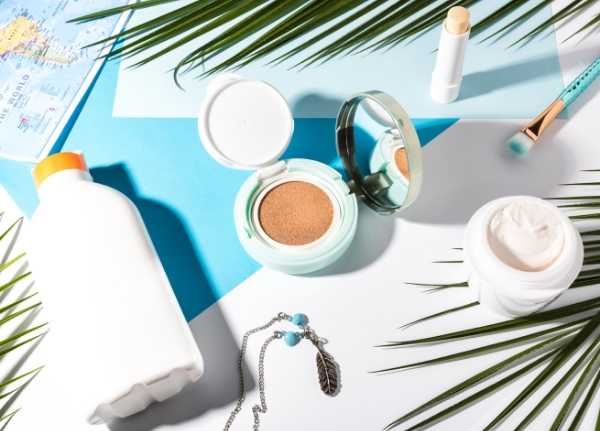
Self-tanning, anti-sand, anti-white marks, waterproof makeup or haircare that maintains the color…Every year, summer rhymes with dedicated products. Our team offers protocols specifically designed to evaluate “summer” claims.
Focus on solar care products
The « infrared" protocol
Infrared rays are invisible to the naked eye and they produce the sensation of heat due to the sun. Their wavelengths, much larger than UVA and UVB allow them to reach the deepest layers of the skin.
Protocol: up to 6 measurement zones are delimited in the back of the subject:
- 5 treated zones
- 1 control zone
Measurements: the subject is irradiated with an infrared lamp. The temperature of the irradiated areas is then measured with infrared thermography.
Parameters: the measured parameter is the skin temperature. A slower increase in the cutaneous temperature of the treated areas versus the control zone demonstrates the preventive efficacy of the tested products.
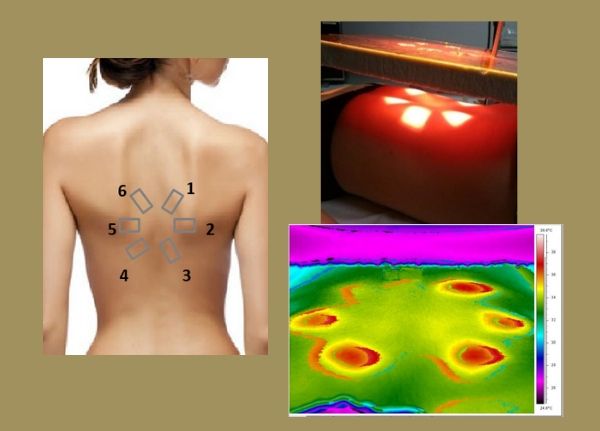
The « anti » protocols
Whether the traces are salt, sand or cream, our protocols, by image analysis and / or clinical evaluation, offer visual or quantitative techniques, to highlight the anti-trace efficacy of solar products.
Protocol:
- standardized exposure to salt water: analysis of the non-adherence of the salt
- standardized exposure to the beach sand : analysis of the non-adherence of the sand
- standardized exposure of cream then salt water bath: analysis of white traces (image 1 : area with colored sea sand, image 2 : product with "anti-sand" claim, image 3 : product without "anti-sand claim).
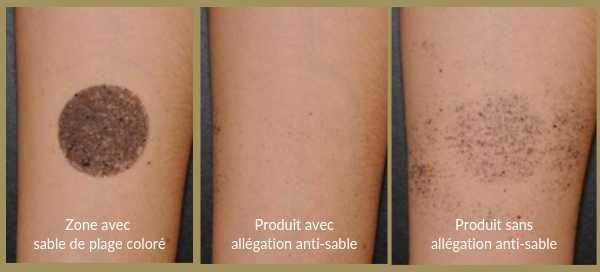
- standardized exposure of cream then salt water bath: analysis of white traces (image 1 : product without "anti white traces" claim, image 2 : product with "anti white traces" claim).
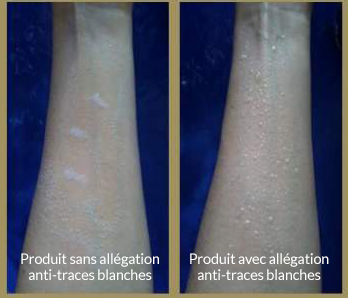
The protocols dedicated to self-tanning products
Beyond the self-tanning effect, it is possible to apprehend claims such as:
- progressive tan
- homogeneous tan
Measurements: measurements can be done with chromameter or image analysis.
Parameters: the color and color homogeneity of the skin are measured. The variation of ΔE allows proving the self-tanning effects of cosmetics
Focus on make-up products
The « waterproof » protocol
Using an internally developed system, to standardize eye immersion, we developed a protocol based on clinical evaluation.
Protocol: after application of the product (mascara, eyeshadow, pencil or eyeliner) the volunteer is subject to an immersion of the eye under standardized conditions.

Measurements: a beautician clinically evaluates different parameters, depending on the type of tested product.
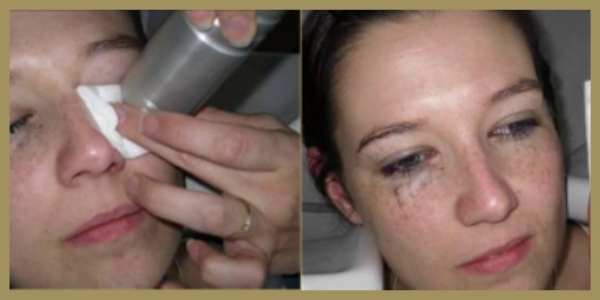
Parameters: the expert evaluates each parameter according to a binary scale. The addition of the obtained scores allows deducing the waterproof effect of the tested product.
The "healthy glow" protocol (“back from holidays”)
Derived from our CLBT protocol, this one allows evaluating the “healthy glow” effect, thanks to the scores of three trained experts.
Protocol: the complexion of the subject is evaluated by three trained experts, before and after application of the product (foundation, BB-cream, powder…).
Measurements: the evaluation is based on the colors of the complexion, its luminosity and its homogeneity, as well as on the signs of strain.
Parameters: for each descriptor, the used results are the average of the evaluation of the three experts.
Focus on haircare products
The "repairing and protective" protocol
Thanks to the Spin Split Hair (system developed internally), we can standardize the mechanical and thermal wear of the hair and then quantify the number of split-ends brittle ends and broken hair.
Protocol: after simulation of sea baths and exposure to an infrared lamp (under standardized conditions), the tresses are subjected to standardized brushing and drying.
Measurements: the split-ends and broken hair are counted.
Expected results: a decrease in the number of split-ends and broken hair on treated tresses versus is expected.
The « coloration stability » protocol
The image analysis allows us to follow the color evolution. The interest of this protocol lies in the simulation of sea baths and infrared exposure
Protocol: locks are photographed under standardized conditions, after coloring and after sea bath simulations and exposure to an infrared lamp (also under standardized conditions).
Measurements and parameters: our software analyzes and determines the L*a*b* parameters, from the RGB components of the image.
Results: the analysis of the results is based on the evolution of ΔE.
The "thermal protection" protocol
The infrared thermography allows precisely measuring the temperature of the hair tresses and to highlight the efficacy of the “thermal protective » products.
Protocol: the hair locks (treated versus placebo) are exposed to an infrared lamp (under standardized conditions) and filmed by a infrared thermal camera.
Measurements and parameters: the temperature is recorded before and during the thermal stress.
Results: the thermal mapping must show that the temperature of the treated lock (on the left ) increases less than the control lock (on the right).
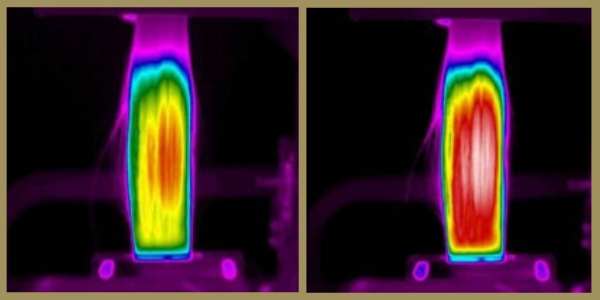
To conclude, each claim can be proven ; the difficulty is to define the most relevant protocol.
You wish to exchange with our team? We are listening to you!

